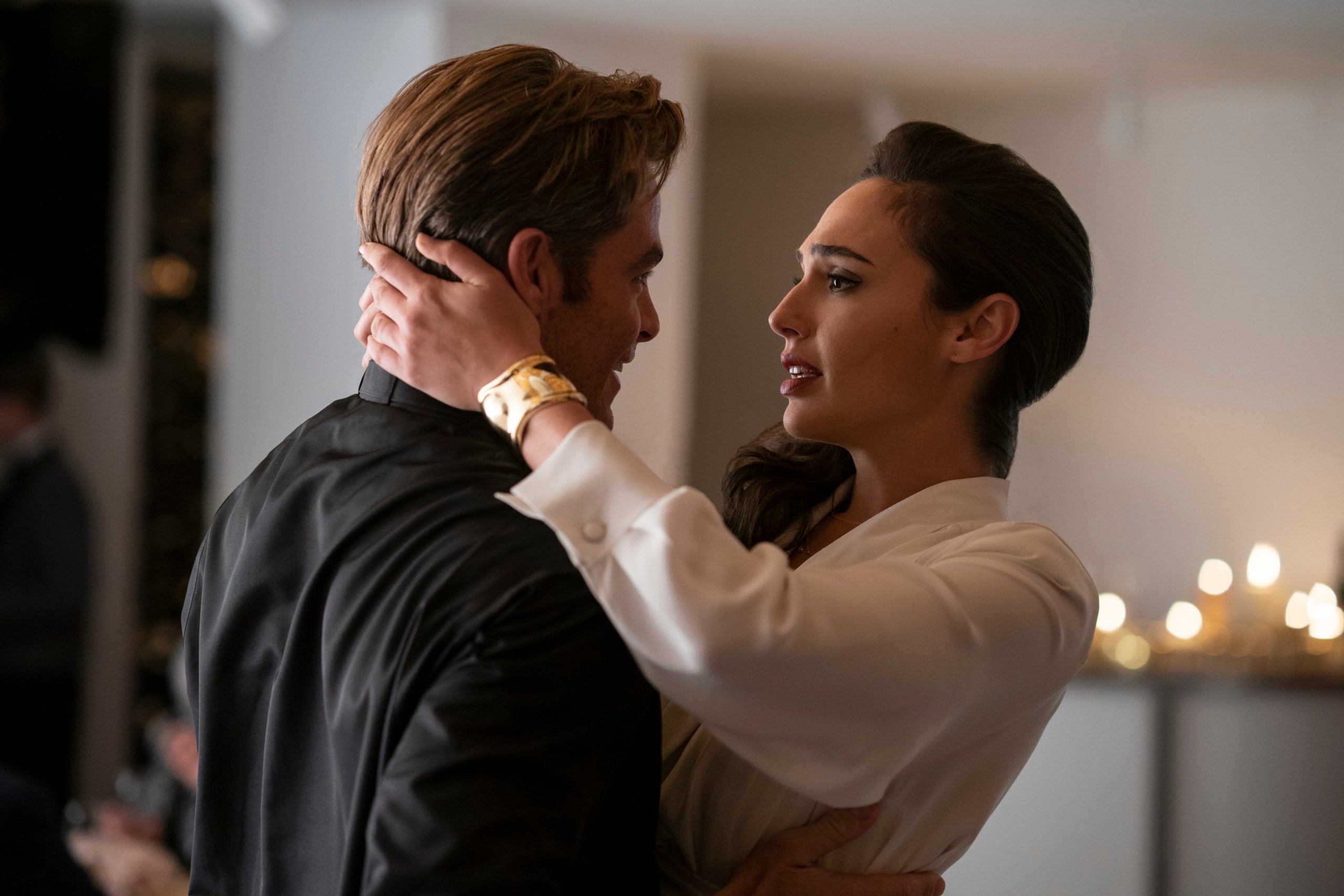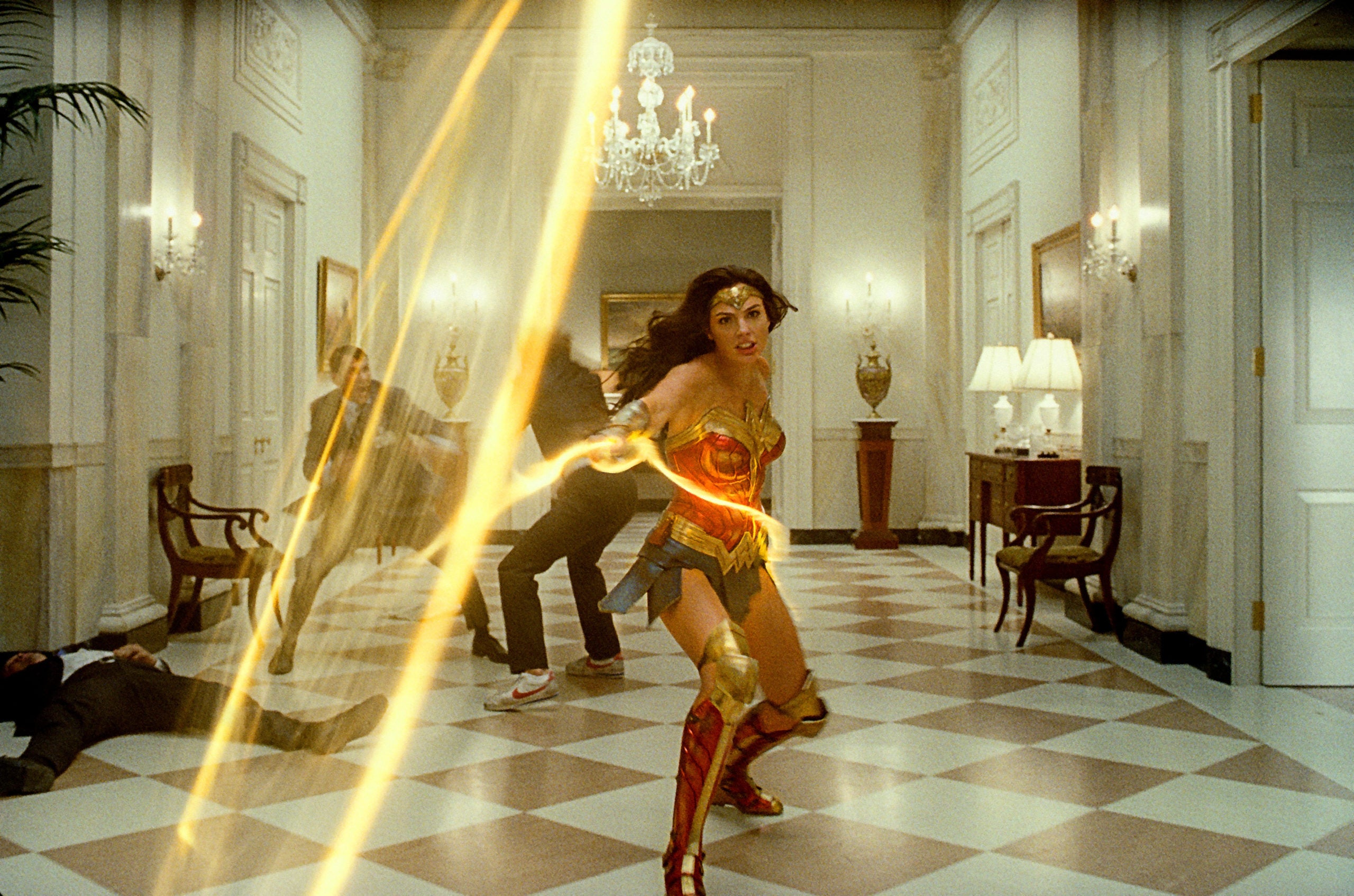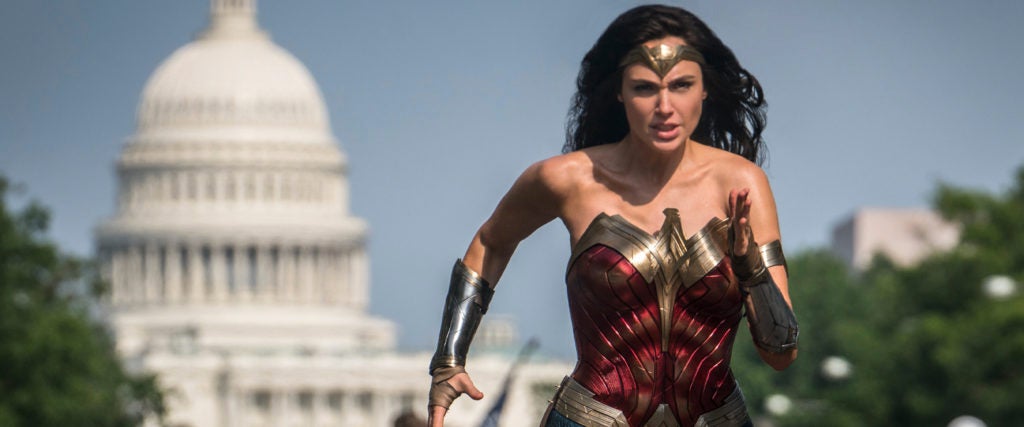The strangest thing about watching Wonder Woman 1984 is being reminded that, not that long ago, this is the kind of movie we’d be checking out just about every week. Before the pandemic, Hollywood was a blockbuster factory, churning out supersized action films on the regular. But when the lockdown started in March, theaters shut down and the event movies went into hibernation. Sure, cut-rate garbage like Unhinged hit the marketplace — and the occasional superhero flick, such as The Old Guard, popped up on Netflix — but for about nine months now, the staple of the film industry, the high-octane action movie, has gone missing.
So while I mostly liked the long-awaited sequel to the 2017 smash, happy to simply enjoy a bunch of explosions and fight scenes and stirring music, I also have to report that Wonder Woman 1984 (which opens on Christmas in theaters and HBO Max) is a bit of a mess. But it’s a mess in part because it’s ambitious, and what’s most winning is how director Patty Jenkins swings even more boldly this time than last. If Wonder Woman played like a war film — appropriate considering that it plopped Diana right in the middle of WWI — then 1984 uses its setting as inspiration for its design. I don’t think Wonder Woman 1984 is the best action movie of the year. But it’s definitely the most 1980s action movie of the year — not just borrowing the era’s tropes but also commenting on them in ways that are nostalgic but also often smart.
Gal Gadot once again plays Diana, who works in Washington, D.C. as an anthropologist at the Smithsonian in, you guessed it, 1984. She hasn’t aged a day since the events of the first movie, but her beloved Steve Trevor (Chris Pine) is long dead, and it’s clear from the photos around her home that she still hasn’t processed his loss. Into her life comes Barbara (Kristen Wiig), a geologist who’s hopelessly nerdy and socially awkward. Diana is everything that Barbara wishes she was — elegant, confident, sexy — but the two women quickly bond. Barbara doesn’t have many friends, and because Diana wants to keep a low profile — after all, she’s still doing Wonder Woman heroics on the side — she too is a bit lonely.
The movie’s principal villain arrives in the form of Maxwell Lord (The Mandalorian’s Pedro Pascal), a flailing entrepreneur who talks a big game but is drowning in debt. (He’s also one of the first of many 1980s references in the film: No doubt people will draw comparisons to Art of the Deal-era Donald Trump, but in truth he’s more like every sharp-dressed would-be Master of the Universe of that decade.) Fearful of going belly up, he crosses paths with the women, promising to make a pricey charitable gift to the Smithsonian. But he’s not all that interested in Diana and Barbara — or the institution itself — but, rather, something important that’s housed there, which he’s convinced will turn his fortunes around.
Because Warner Bros. might send assassins to my house if I reveal more of the plot, I’ll stop there and simply suggest that Wonder Woman 1984 interrogates a very 1980s sentiment, which is the desire to have more and more. And that phenomenon plays out in very different ways for the main characters — particularly for Diana who discovers, to her shock, that Steve has suddenly returned to her orbit. Torn between being ecstatic and confused, she quickly realizes what’s going on — and how it connects to strange things that occur for Maxwell and Barbara. If the Reagan era was partly about rabid self-absorption — going after what you wanted at the expense of others — then Wonder Woman 1984 turns it into a central conflict, analyzing what happens when seemingly decent people are presented with a shortcut around their problems, potentially transforming them into monsters in the process.

Jenkins’ examination of unchecked greed makes sense in the context of a Wonder Woman film. One of the best elements of the 2017 movie was its suggestion that Diana, a noble Amazonian bewildered by the pettiness and cowardice of mortals, represented the best of us: She was selfless and brave, inspiring Steve and his men to be better, too. World War I was a time of great moral darkness, and in a very different way, so is the 1980s depicted in Wonder Woman 1984. It’s telling that Wonder Woman’s first big action scene in the sequel takes place in a nondescript mall — it’s a nod to the soulless consumerism that’s risen up all around her. Diana hasn’t changed — she’s still pure of heart and deed — but when Steve comes back into her life, she recognizes that she’s as corruptible as anyone else. Would she rather have Steve back than correct the cosmic quirk that secured his return but might exact a greater price? This time around, Wonder Woman’s decency has greater stakes. In Wonder Woman 1984, she has more to lose — actually, she already lost it once, and she doesn’t want to lose it again.
But what makes Wonder Woman 1984 such a 1980s movie is its giddy pillaging from classics of the period. A Cairo car chase proves to be an homage to a similar action sequence in Raiders of the Lost Ark, while Maxwell’s megalomaniacal plan for world domination wouldn’t be out of keeping for a Bond villain. And although the first Superman film came out at the end of the 1970s, Wonder Woman 1984 references its sequels — everything from the terrific Superman II to the woeful Superman IV: The Quest for Peace — to make the connection between the two superheroes even more blatant.
The Christopher Reeve Superman was an honorable, slightly square fella who loved the human race even though he never could entirely figure them out. Gadot plays Wonder Woman as an assured independent woman who’s less thrown by mortals than she was in the 2017 film — after all, she’s been living among them for nearly 70 years now — but like Kal-El, she still considers it her sacred duty to protect people. It’s an old-fashioned superhero-movie idea: no gritty backstory, no dark overtones, just someone who wants to save the day.
Unfortunately, this 1980s time-warp also means a lot of cringe-y shout-outs to forgotten relics like the fanny pack and Jane Fonda workout fashion. And the rapport between Gadot and Pine — so central to the charm of the first film — feels a little forced in the new film, although it’s a clever twist that, in contrast to Wonder Woman, now he’s the one thrown by the strange world around him. There’s something awfully endearing about puppy-dog Steve being so awed by things like escalators and commercial airplanes — although that puts him in fine company among other iconic fish-out-of-water 1980s comedies and dramas like Splash and Starman. (That said, the actual explanation for why he’s returned — which I won’t reveal — even more strongly harks back to a certain film premise that was pretty popular during that era.)

Although the sequel overdoes the 1980s riffs, Jenkins also slyly skewers some of that decade’s cinematic conventions. For one thing, Wonder Woman 1984 is a movie about a female action hero, something you wouldn’t have seen back then outside of Aliens. And when Wonder Woman eventually squares off with Maxwell, it doesn’t lead to the sort of big-laser-in-the-sky-that’s-going-to-destroy-everything climactic set piece that’s become so standard in every recent superhero film. Instead, Wonder Woman 1984 ultimately turns on a very 1980s trope, which is that the fate of the planet rests on the hope that Earth’s two superpowers don’t annihilate everyone with nuclear weapons. For all its spectacle and franchise-building expectations, the movie espouses simplistic old bromides like the importance of peace and love, which is the same kind of sentiment you’d see in WarGames, 2010 and Superman IV — movies that, back in the day, saw the escalation of hostilities between nations as a thing worth fearing.
But Jenkins gives those sentiments resonance for the reason that Wonder Woman 1984 is most not like an 1980s movie, which is that a woman made it. In thousands of professions, women are often held back from promotions because — according to sexist beliefs — they’re too “emotional” to be put in positions of authority. When the uneven Wonder Woman 1984 soars, it’s because Jenkins spits in the eye of that outdated assumption. For many years, women weren’t allowed in the director’s chair. (That’s getting better recently, although there’s still a long way to go.) But there are moments in this film that are as moving as any I’ve seen in a recent comic-book film, and that’s because Jenkins and Gadot are wholly unafraid to embrace what’s so emotional about Diana’s journey.
Unsure what to do about the arrival of her dead love and worried that she may not have it in her this time to save the world, Diana will need to rely on much more than brawn in Wonder Woman 1984 — things like emotional intelligence, maturity, even compassion. This approach would have never worked in actual 1980s action movies, a period in which one tough guy after another ruled the multiplex. In a sense, 1980s action movies emulated their era, embracing society’s greed-is-good mentality by delivering bigger shootouts, more testosterone and flashier special effects. Despite its flaws, Wonder Woman 1984 believes that human beings don’t need all that stuff to be happy. Diana is as mighty as any other superhero, but what her movies have that the competition doesn’t is an insistence that there’s room for love and kindness in the world, even when it’s being threatened by supervillains. She makes soft power look downright inspiring.

